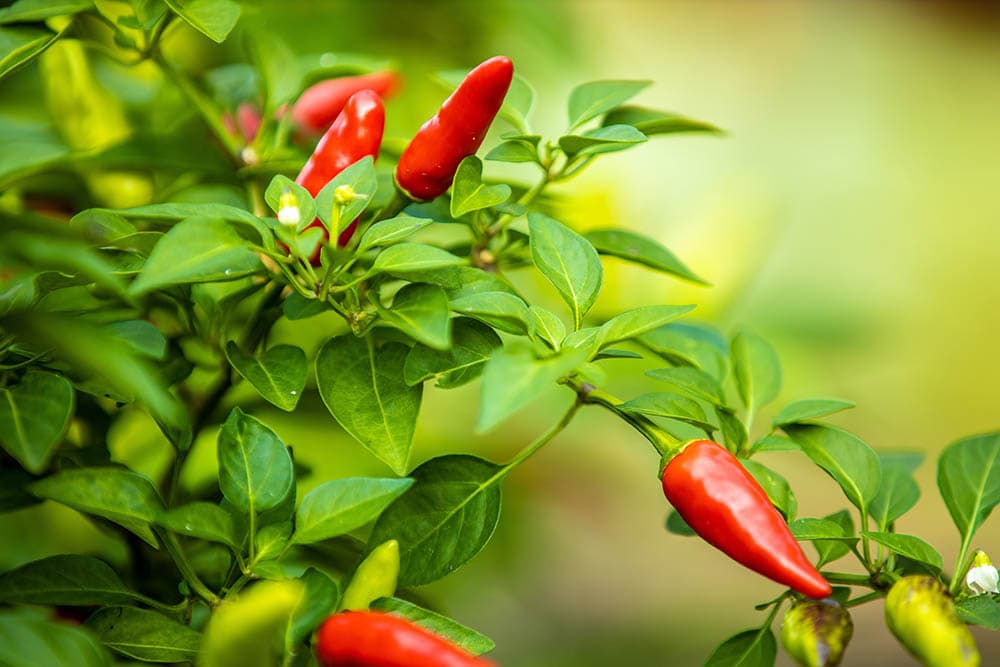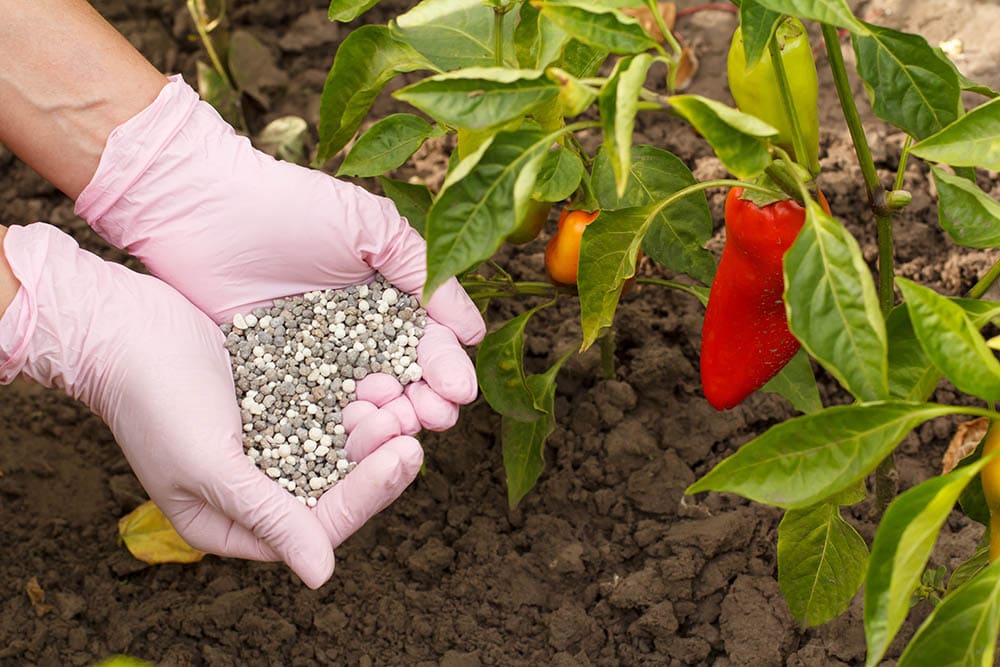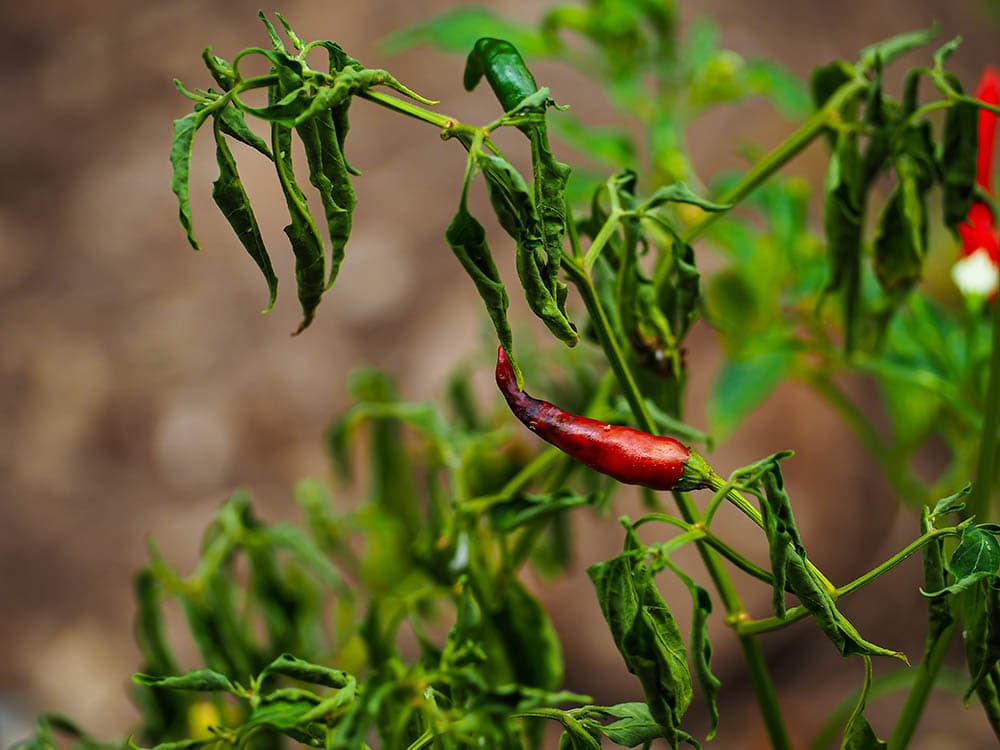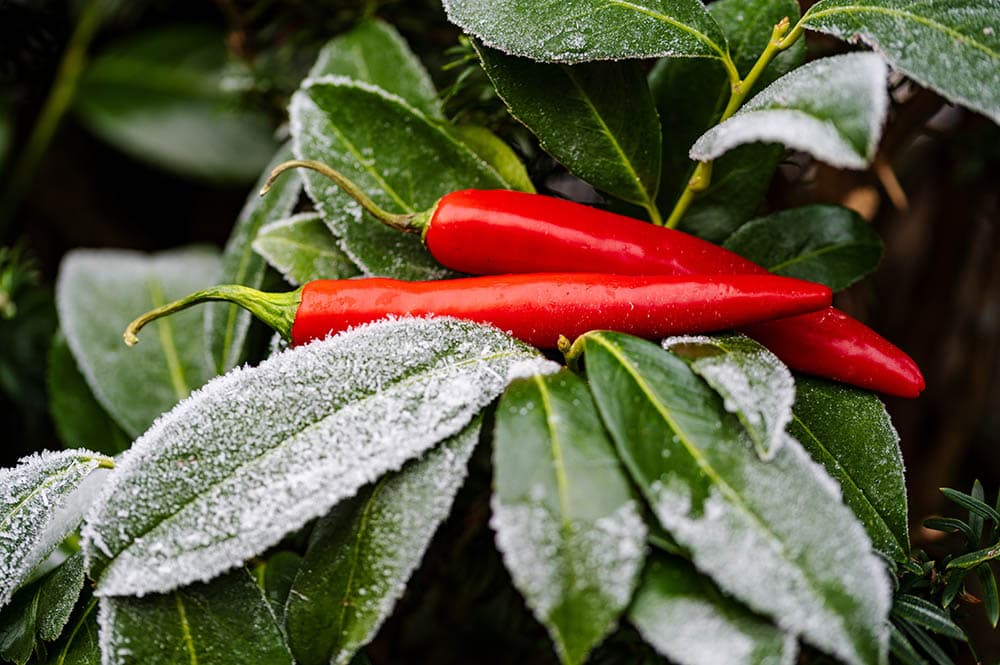Why Pepper Plants Turn Yellow: 6 Reasons & Fixes
-
Codee Chessher
- Last updated:

Pepper plants can be finicky to grow because they face a wide number of problems. For example, there are half a dozen problems that can cause pepper plants to yellow. It can be tricky to identify the cause of the yellowing, but with a keen eye, you can figure out the issue before it becomes serious. Let’s find out why your pepper plants are turning yellow, and how to fix them.
The 6 Reasons Why Pepper Plants Turn Yellow
1. Overwatering and Underwatering
Pepper plants need a specific amount of water to thrive and deviating from that range can cause yellow spots and more systemic yellowing. One problem that can simulate underwatering is compacted soil where water can’t flow to the roots. Make sure that your soil isn’t compacted and slowly increase how much water you give your plant.
Overwatering is a common issue, too. When your plant doesn’t have adequate drainage, it will become stagnant and promote root rot while washing away valuable nutrients. Ensure that your plants have holes in the bottom of their pot or well-draining soil for plants in the ground. To prevent overwatering in the future, carefully monitor the amount the plant needs and don’t rewater until the soil is dry to the touch. If it’s cracking, you’ve waited too long.
2. Nutritional Deficiency

The easiest way to check if the yellowing is caused by a nutritional deficiency is to look at the base of your plant. If the yellowing is starting from the base and spreading upward, it means the roots aren’t getting enough nutrients. Common deficiencies include nitrogen, calcium, iron, and magnesium. Plants with a magnesium deficiency will often show yellow leaves except for the veins, so watch out for that, too.
The best way to prevent and cure deficiencies is with a well-balanced fertilizer. The most common products available will usually have nitrogen, calcium, and magnesium, along with some other nutrients. For magnesium deficiencies, you can add small amounts of Epsom salt to the soil, and eggshells will help provide calcium.
3. Disease
The most common diseases that cause pepper plants to yellow are bacterial leaf spot, southern blight, fusarium wilt, and phytophthora blight. The best way to prevent all these is to avoid extreme moisture and excessive aridity. Diseased portions of plants are untreatable and need to be removed to avoid spreading to the rest of the plant or other plants. Unfortunately, you won’t be able to plant nightshade plants in areas that have been diseased within the past year.
To help avoid these diseases in the first place, ensure that you’re watering the base of the plant and not the leaves. Excessive moisture lingering on the leaves can quickly turn to disease, so be careful.
4. Harmful Pests

Mites and aphids feasting on your pepper plants can cause yellowing, but usually, the issue is mild unless you have a heavy infestation. Small yellow dots are symptomatic of a pest problem, while whole leaves would indicate a lot of mites or aphids. In such cases, you would also be able to easily see the bugs.
To kill and repel these bugs, spray neem oil or use insecticidal soap on your pepper plant. These will kill mites and aphids while not harming beneficial insects or leaving a chemical residue. Heavier pesticides are also effective, but they’ll kill all insects in the process.
5. Too Much Chlorine
Excess chlorine from fertilizer or tap water can essentially overdose your plants with chlorine and cause them to yellow. However, cases of plants receiving too much chlorine are extremely rare. We’d suggest checking the other entries on this list before investigating the possibility.
Thankfully, there’s an easy fix in the event that you run into this problem. You can manage excessive chlorine by washing away the chlorine with unchlorinated water or by letting rain cleanse the plant and soil.
6. Cold Temperatures

Pepper plants are known to prefer warm temperatures, doing poorly under their preferred range of 70°F–80°F. Yellowing can start at below 60°F, with plants being in danger of dying once temperatures reach 40°F or below. Yellowing generally gets more severe as the temperature drops.
Covering your pepper plants when it gets chilly can help mitigate the worst of the damage, although you can’t control the temperature. If it gets down to freezing, you’ll have to face the possibility that your plants will die.
Final Thoughts
Pepper plants are a great way to get some color and spice into the kitchen, but numerous issues can cause them to turn yellow. Nutritional deficiencies are the most common cause of yellowing pepper plants, with improper watering a close second.
Featured Image Credit: Nick Artman, Unsplash
Contents
